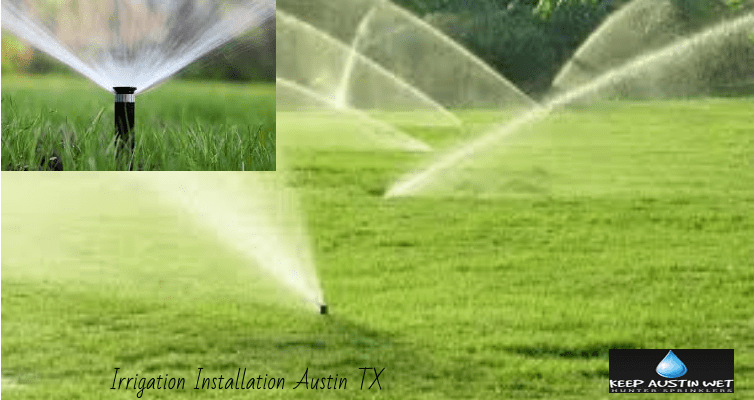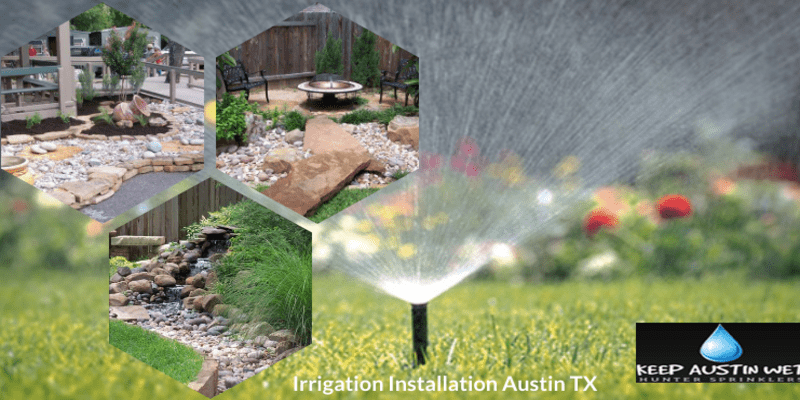Irrigation is considered the keystone of agriculture. Without it, the greens we see all around us would be nothing but arid land. However, water being one among the precious elements that keep us alive, should be conserved and used in the right way. To ensure that everything is in line with the safety of nature as well as suits our needs and requirements, we need to decode the difference between the commonly used variants of irrigation.
Now, there are various types of irrigation processes, but here we are going to discuss and compare sprinkler irrigation and flood irrigation.
Before comparing, we must know how these two irrigation system function if you have plans for irrigation installation, Austin, TX.
Sprinkler Irrigation vs. Flood Irrigation: The Comparative Rundown
With sprinkler irrigation, water is supplied through a pipe system by pumping and then sprayed to the entire field, which looks like natural rainfall. Whereas flood irrigation is a very simple method in which water is delivered by pipes, ditch, or some other means, and the water simply flows over the field through the crops.
The technology of sprinkler irrigation was tabled in the realm about a century ago, but its use increased to bigger areas forthe past eighty years only. A lot of areas in the world faced salinity issues due to uncontrolled and unplanned surface irrigation systems.
However, after World War 2, due to the evolution of plastics, modernization of pipes of light aluminum, efficient electric motor, and pumps, phenomenal development in irrigation took place bringing into the scenario, thesprinkler system.
Nowadays, irrigation in valleys or lawns/gardens has been switched from flood irrigation to sprinkler irrigation. Now you might be wondering why people make an effort to switch their irrigation methodology to a better one.
Changing over from flood irrigation to sprinkler irrigation has helped in various ways, which include saving more water, energy, and effort. And here are some more reasons why you need services for irrigation installation, Austin, TX.
-
Irrigation Efficiency:
Perhaps the ultimate benefit to a lawn owner for converting irrigation systems is the increase in entire irrigation efficiency. This term actually defines the ratio between the total volumes of water profitably used by the crops to the total volume of water supplied to the crops.
Irrigation efficiency in flood irrigation is very less in comparison to sprinkler irrigation, although it can fluctuate depending on geological and climatic factors. The irrigation efficiency of flood irrigation is around 45% to 60%, whereas sprinkler irrigation has around 65% to 80% efficiency.
It’s also been proven that by changing from flood irrigation to sprinkler irrigation, there has been an approximately 50% to 70% increase in the average irrigation efficiency. So, hiring service providers for irrigation installation, Austin, TX, would most definitely be a great idea.
-
Water Logging Effect:
Waterlogging is a major issue associated with irrigation. It can stop the further growth of plants and delay it until the excess water drains or dries up from the root surface.
But with sprinkler irrigation, waterlogging is not an issue; however, you will face this problem with flood irrigation. Waterlogging causes the water to proceed below the root zone, which results in the rise of water tables. In places having saline soils, these increasing water tables can bring salt up into the root zone, which leads to irrigation salinity trouble.
Water is distributed uniformly when you use a sprinkler. This helps to provide a sufficient amount of water to the plants without any waterlog. In this way, you can prevent excessive loss of water, which seems to occur in flood irrigation.
-
Land Factor:
In sprinkler irrigation, leveling of land is not required, unlike flood irrigation, which can be expensive. Additionally, for the establishment of your sprinkler irrigation, use of wide areas is also not necessary.
Grading of the land is required in flood irrigation for uniform distribution of water. But if you are using sprinkler irrigation, then it can be avoided as the sprinkler distributes water evenly.
With sprinkler irrigation, leaching of the nutrients in the soil is not an issue, whereas, in flood irrigation, excessive leaching can happen even under perfect water movement. Leaching of nutrients in soil requires extra fertilization, which eventually increases the cost for labor, fuel, fertilizers, and equipment.
The most important plus point of using sprinkler irrigation over flood irrigation is that the sprinkler irrigation system is appropriate for establishment in any type of soil. This is because the sprinkler system provides a uniform and ideal amount of water depending upon the crop and soil type.
-
Labor-Reduction:
Another important aspect to take into consideration while choosing sprinkler irrigation installation, Austin, TX, over flood irrigation is the reduced implementation of manual labor. Sprinkler systems can offer many economic and environmental benefits over flood systems as well.
Sprinkler irrigation has shown significant savings on labor as compared to flood irrigation. Current analysis shows labor costs can be diminished approximately by 90% with new techs that include modern automation gear.
Flood irrigation needs extra labor involvement and regular care as aspirators must routinely move mud dams all along the day to assure sufficient water cover and prevent ponding.
If mud-dam movement at proper intervals is not done, then the excess water can cause erosion and leaching, which leads to topsoil and nutrients loss.
In sprinkler irrigation, no water dam movement is required as the sprinklers distribute water uniformly. This is how the labor cost and effort is cut to more than half by using sprinklers.
-
Effect on economy and time:
Sprinkler irrigation systems can economize producers’ money and time, as most sprinkler irrigation systems need relocation only every twelve hours. In addition to that, sprinklers provide more consistent and uniform water cover and ensure minimal soil erosion and nutrient loss, which saves both input and labor.
Chemigation and fertigation in sprinkler irrigation can be done for pest control or plant nutrition by infusing chemicals into the water of irrigation, saving a lot of time as well as labor. In the case of flood irrigation, chemigation and fertigation are needed to be done by the rancher or lawn owner, which increases labor.
At specified time or angles, the core pivot system of the sprinkler can be hardwired to fire up and stop. This is important, which helps the sprinkler in uniform distribution of water as well as saves a lot of time. In this way, the extent of water supplied can be controlled, which results in saving water.
-
Eco-friendliness:
A sprinkler irrigation system can also be used for the purpose of cooling during high heat. There are plentiful other purposes for sprinkler irrigation, which include cooling poultry environments and livestock, protection from farm fire, prevent settling of dust, and log curing.
Apart from that, the sprinklers can be accordingly modified by adding more transversal routes and sprinklers at prearranged spacing so that the complete field can be covered with a fine drizzle of water during the post rainy season days when the temperature is much cooler. In this way, crops can be protected from frost.
Conclusion
As the years pass by, the anxiety and concern for going green has elevated all over the world, which has lead to the advancement of technology for irrigation. And among these great advancements, sprinkler irrigation is also one. Well, of course, sprinkler irrigation is a mind-blowing technology that eases farming and also boosts your home garden harvest while keeping your lawn green and fresh without wasting water.
If you are an agricultural produceror lawn owner and still using a flood irrigation system, then now is the perfect time to switch your irrigation method to sprinkler irrigation. Hunter Sprinkler Services provides you with a perfect opportunity to switch and improve your irrigation system by using a sprinkler system. Hunter Sprinkler Services uses only the top quality Rainbird and HunterBrand Irrigation Products. So, no time wasting your precious time questioning and thinking. Upgrade your irrigation system today by calling us at 512-690-3113 for quick information on a free estimate. You can also mail us at aubreyhunter@aol.com.


